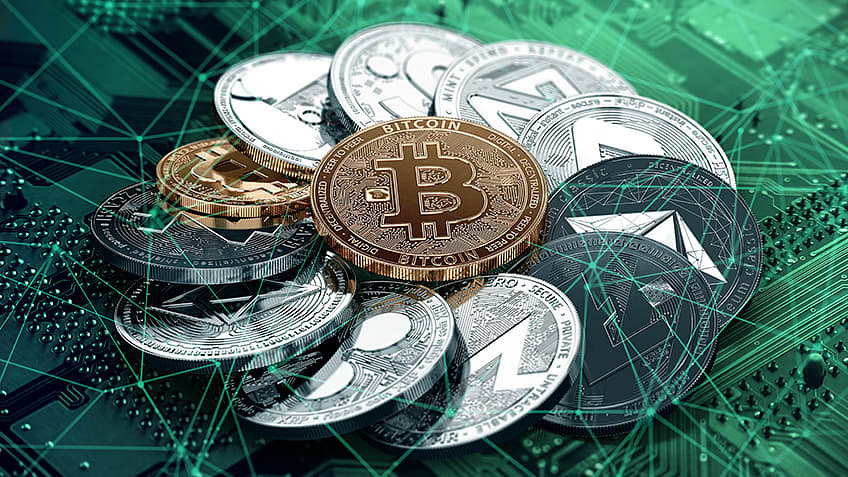Within the swiftly transforming world of finances, cryptocurrencies and physical currency (also called fiat currency) take form as two distinct types in terms of how transactions are conducted around the globe. Each of these has a different set of features, uses, and implications, with regards to economies, businesses, and individuals. So much so that it could be argued that understanding the existence and importance of these things, as well as how they affect the world, will play a major role in navigating changing tides.
Differences Between Crypto and Physical Currency
- Form and Nature:
- Physical Currency: Fiat or physical currency includes the typical coins and banknotes, in literal terms legal tender by government issuance. Therefore, it is tangible, and acts as the medium of exchange to goods and services in the economy. They include the US Dollar (USD), Euro (EUR), and British Pound (GBP).
- Cryptocurrency: Cryptocurrency can be understood as a kind of virtual or digital money, which uses cryptography for securing transactions on decentralized platforms. Unlike tangible currency, it does not take a material form. One can cite Bitcoin (BTC) and Ethereum (ETH), along with Litecoin (LTC), among its popular examples.
- Centralization:
- Physical Currency: It is issued and controlled by central authorities such as the government or central banks. The actual monetary value for the physical currency originates from the economy of the country issuing the currency and the institutions therein.
- Cryptocurrency: Although most efficient in the transactions facilitated by a decentralized currency such as bitcoin during cross-border transfers, the transaction does not require the intervention of banks or government and thus may consume higher processing fees. Transactions using bitcoins are processed using blockchain technology, which consists of a record of transactions in a distributed ledger that operates on multiple nodes.
- Transaction Process:
- Physical Currency: By their very nature, physical transactions require a physical exchange. An example of this returns to the earlier part about purchasing a cup of coffee using cash, wherein cash exchanges hands directly.
- Cryptocurrency: Transactions are carried out digitally via a blockchain network. This helps enables swift and secure as well as transparent transactions in peer-to-peer exchanges with minimal involvement by an external third party, banks in this situation.
- Value and Volatility:
- Physical Currency: The fiat currency value changes quite little comparatively, and the fluctuations among the values are mostly made by economic factors such as inflation and interest rates.
- Cryptocurrency: It is true that cryptocurrencies can be highly volatile, meaning there are large fluctuations in their values. Market demand, as well as mood or attitude of investors and even regulatory news, can potentially create great impacts on the value of the cryptocurrency.
- Accessibility and Use:
- Physical Currency: Popular acceptance for routine transactions, but it can also be limited by geography, currency rates, and availability of physical money infrastructure.
- Cryptocurrency: Slowly gaining traction in both online and offline retail spaces, whereby people still have come to spend it through conversion. Cryptos also act as enhancer in remittance markets, savings, and diversification of financial services in countries where currencies are unstable.
Importance of Physical Currency

- Widely Accepted: Physically, money is the most prominent form of payment accepted almost everywhere. Its ease and practicality make it the most attractive type of payment for everyday transactions.
- Government Backing: Since it is issued by central banks, it is legally recognized as tender; in other words, it is accepted as a medium of exchange in the country.
- Stability: Government revenue is backed by the country’s financial system, which ensures that the value is consistent at all times in the short-term; physical currency is said to experience relative stability.
- Access to All Demographics: It’s vital for persons lacking digital techniques for banking or are by preference not using digital payment systems in financial transactions.
Importance of Cryptocurrency
- Decentralization: Cryptocurrencies are decentralized currency alternatives, where users can meet and transact directly without the intervention of banks or other financial institutions.
- Global Accessibility: Global transactions conducted by cryptocurrencies could dispense with the exchange rate and banking systems, making them especially feasible in circumstances of underbanked areas or even, International money transfers.
- Security and Transparency: Transaction made by blockchain networks is a secure, reliable and irreversible that brings a high way of trust. Its decentralized nature minimizes risks associated with centralized financial systems.
- Innovation and Financial Inclusion: There is the possibility that cryptocurrencies will change the financial system for the better, and this promises to enable the currently unbanked populations to access the wider global economy and facilitate financial innovations such as smart contracts and decentralized finance (DeFi).
- Investment Opportunities: Most people consider cryptocurrencies investments characterized by high risks with high rewards. And all this volatility has attracted some investors wanting to take on more diversified investments in their portfolios, hoping for really big returns.
How Crypto is Impacting the Global Economy and Physical Currency
- Disrupting Traditional Finance: Nonetheless, this emergent form of currency is rising in power and authority over the face of more than challenging the conventional banking systems and other monetary systems. By enabling the possibility of making transactions without depending on any intermediating party, even banks or financial institutions, and governments, they can somewhat provide their users a decentralized, transparent, and highly secure solution to transactions. To adapt to such rapid changes, traditional financial institutions have begun offering new types of financial services: a digital wallet, crypto exchanges, and even central bank digital currencies (CBDCs).
- Decentralized Finance (DeFi): Changing the financial world and whole lives will be decentralized finance (DeFi) platforms. These platforms have enabled individuals to lend without bank or broker interferences, borrow, trade, and invest. It democratized the provision of financial services to the unbanked regions of the world.
- Global Payment Systems: This, among others, is the reason why cryptocurrency is being considered a global monument in payment or remittance systems. In addition to the electronic and digital transfer of funds that typically takes a long while and costs quite a lot, in addition to being time-consuming, traditional cross-border bank transactions usually take several days and come at an exorbitant cost with lots of fees backed by exchange rate differences. Whenever transactions that occur globally cross the border, they become almost instantaneously finished; with costs significantly lowered, especially on assets like bitcoin or stablecoins.
- Impact on Fiat Currency: Even if a certain section fears that cryptocurrencies would erode the authority of their fiat counterparts, the fact remains that these digital currencies have still not replaced the conventional physical currency though they can be used against fiat ones. Countries with unstable economies have adopted cryptocurrencies as a store of value while the vast majority of all transactions are still being done using fiat currencies.
- Regulation and Legal Uncertainty: It is a widespread phenomenon that governments around the world are trying to figure out how to regulate cryptocurrencies. Some countries treat cryptocurrencies as a kind of legitimate asset, while others heavily restrict or ban them outright. The new reality brought by regulatory measures will have a great effect on how in the longer term cryptocurrency will exist alongside physical currency.
- Environmental Impact: There are concerns about the environmental impact of energy consumption from cryptocurrency mining, particularly Bitcoin. This creates a difference from physical currency, which, although it has an expense for creating paper and coinage, is not so much criticized with regards to the energy it consumes.
Conclusion: A Dual Future?
Physical currency will remain deeply embedded in the world’s economy in 2025 but will rise with the speed of cryptocurrencies in creating opportunities for innovations in finance. Criptonomics comes with many appealing alternatives vis-a-vis traditional banking systems in regards to decentralization, accessibility, and positive reservations about potential financial inclusion. Cryptocurrency will still retain the very integral importance of cash for its stability, acceptance worldwide, and format in economies regulated by legitimacy by the government.
In the future, both systems might as well co-exist, with cryptocurrencies bringing the new financial instruments, while cash has and still does make the foundation of the everyday purchase. The evolution of these two forms of money will depend on regulations, technology, and people’s choices. This creates a thrilling and awesome time within finance.







